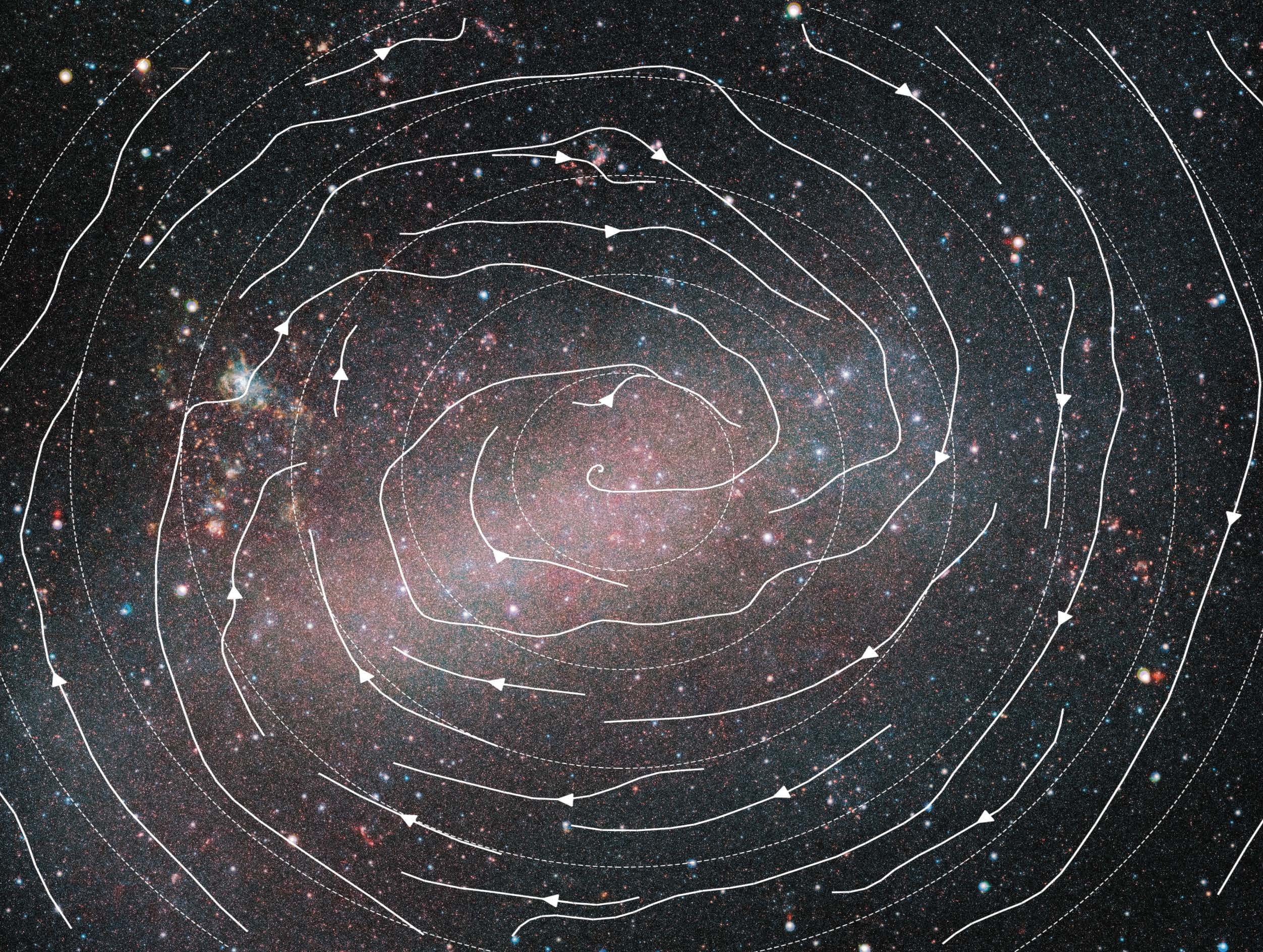
When most of us think of spiral galaxies, we think of beautiful systems of spiraling stars that are all sweeping arcs tracing out the golden ratio in stars. The thing is that there are a lot of galaxies with interrupting bars that stick out like sprinkler heads that disrupt the normal grace of these systems.
Exactly why some galaxies have bars is still not really understood, but one thing we do know is that bars aren’t unique to spirals like our Milky Way, which does have a bar, and we think this structure has something to do with companion galaxies. We actually see a bar in the nearby Large Magellanic Cloud, which is so nearby that we can measure the velocities of individual stars.
This creates a powerful opportunity to get at the physics behind these structures, and taking advantage of this opportunity is a team of researchers at Leibniz Institute for Astrophysics using data from the VISTA survey of the Magellanic Clouds system. According to principal investigator Maria-Rosa Cioni: Thanks to their close proximity of about 163,000 light-years, we can observe individual stars within the Magellanic Clouds using ground-based telescopes like VISTA. Thus, these galaxies provide us with a unique laboratory to study in great detail the processes that shape and form galaxies.
And using this data, they found the specific family of elongated orbits behind the visible bar structure.
This work is described in a new paper in Monthly Notices of the Royal Astronomical Society with lead author Florian Niederhofer, who explains: A specific type of these [elongated orbits] are the ones that are aligned with the major axis of the bar. These are considered to be the ‘backbone’ of stellar bars and provide the main support of the bar structure.
Getting at the orbits that build up the bar wasn’t an easy observation. This team used nine years of observations to get this result, and it was only possible because the Magellanic clouds are essentially in the outer suburbs of our Milky Way. Niederhofer goes on to explain: Our discovery provides an important contribution to the study of dynamical properties of barred galaxies since the Magellanic Clouds are at present the only galaxies where such motions can be investigated using stellar proper motions. For more distant galaxies this is still beyond our technical capabilities.
This just goes to show that sometimes, when you’re trying to understand the universe, you need to just take a really good look at what is in your own local neighborhood.
More Information
AIP press release
“The VMC survey – XLVI. Stellar proper motions in the centre of the Large Magellanic Cloud,” Florian Niederhofer et al., 2022 March 29, Monthly Notices of the Royal Astronomical Society




 Join the Crew!
Join the Crew!
 Escape Velocity Space News
Escape Velocity Space News
0 Comments